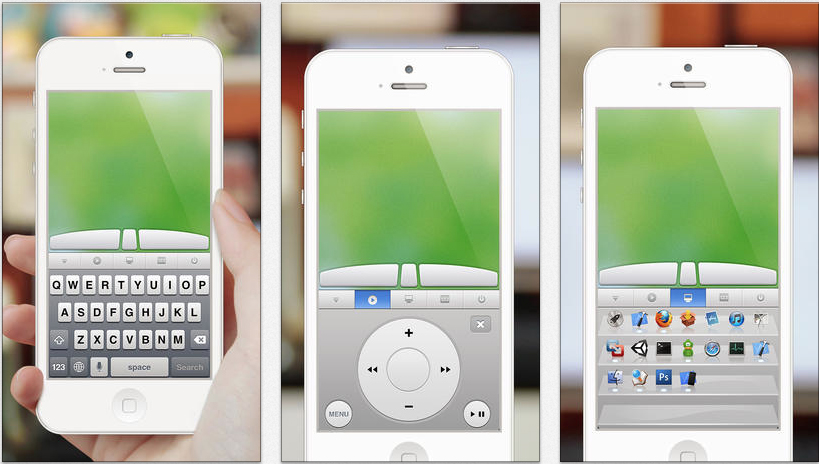

You also have buttons for the menu, play/pause, Apple TV app, and microphone. You can tap to open an app, tap and hold an app to move it, or tap, hold, and then select the play/pause button to open the app actions like delete or move to a folder. Swipe left, right, up, and down to navigate your Apple TV. Like your Siri Remote, you have a large square in the center for your swipe gestures. If you don’t see your TV, make sure that your Apple TV and iPhone are on the same Wi-Fi network. When your Apple TV displays on the app screen, select it. Make sure your TV is on and the app will find it.
Apple remote on iphone install#
Once you download and install the app, open it up to connect it to your Apple TV. Please be sure to check for your devices and systems. The App Store description has a long list of device and operating system requirements to use the app.
Apple remote on iphone for free#
You can download the Apple TV Remote app for your iPhone for free on the App Store. Ways to control your Apple TV no matter whatĭownload and connect the Apple TV Remote app.Use the Apple TV Remote from your Control Center.Add the Apple TV Remote to your Control Center.Download and connect the Apple TV Remote app.Perhaps the next time iPhone displays get even bigger, this will finally become a reality! Until then, more hoop-jumping is required to get the job done. It would be nice if Apple made it easier to control a Mac from iPhone in the future.
Apple remote on iphone for mac#
At the same time, SharePlay and FaceTime make it possible for Mac users to show anyone with an iPhone (or another device) what's happening on a Mac window or the display. Using iCloud Drive might be the best way to share files and folders. And yet, it's possible by turning on Mac Screen Sharing and using a third-party solution such as Google Chrome or a paid option.

1 reason Apple hasn't released a native remote feature. Limitations existĪn iPhone isn't an ideal solution for controlling a Mac from a mobile device. To access the content on iPhone, use the Files app. For this to work, you must be logged into the same Apple ID on both machines and use iCloud to store files. With iCloud Drive (opens in new tab), you can share folders and files across multiple Apple devices, including iPhone and Mac. Paid options worth considering include TeamViewer (opens in new tab) and LogMeIn (opens in new tab).

Nonetheless, you can still get the job done for free using Google Chrome. There are paid remote desktop options (opens in new tab) available to save you a step or two. Choose 'Next.' Enter, reenter a six-digit pin, click 'Start,' and follow the additional directions. It will show the default name, which you can change or replace. Once the extension is installed, you'll head back to the Google Chrome browser and add the computer's name in the box. Click the button for 'Set up remote access.' Next, click the icon 'Add to Chrome.' Follow the on-screen instructions to install the remote access extension on your Mac. Visit (opens in new tab) through the Chrome browser and look into your Google account if you haven't already done so. Install the free Google Chrome browser app (opens in new tab) on your Mac. With Screen Sharing activated, note the address and computer name under the 'Screen Sharing: On" section at the top right.


 0 kommentar(er)
0 kommentar(er)
